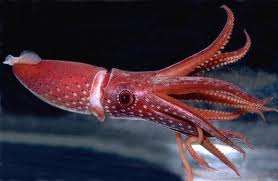hitosan is a biodegradable, non-toxic, linear cationic polymer obtained by the N-deacetylation of chitin. The substance is not soluble in water but becomes soluble in dilute acids when the degree of deacetylation is over 50%. When chitin reaches a nitrogen content of more than 7%, or when the degree of deacetylation exceeds 60% the term chitosan is favoured. Chitosan has great biological properties but due to his poor aqueous solubility, it is often depolymerized to create low molecular weight chitosans (LMWCs) and Chitooligosaccharides (COSs) , both readily soluble in water due to their shorter chain lengths and free amino groups. By introducing small functional groups such as, alkyl or carboxymethyl groups, we can strongly increase chitosan solubility at neutral and alkaline pH without affecting its cationic character. Chitosan is a versatile polymer with many functional groups available for chemical modification, therefore it displays a lot of potential for commercial applications such as food, cosmetics , biotechnology, agriculture, environmental protection and wastewater management…
Among characteristics of chitosan greatly influencing the properties of formulations. We have :
- viscosity and molecular weight
- degree of deacetylation
- degree of purety : ash content and protein, turbidity, heavy metal concentration, microbial count
- source : squid, shrimp
Influence of the preparation method on its physicochemical properties
During chitosan deacetylation, the degradation of the polymer chain takes place. At the same time, the crystallinity of chitosan can be damaged by using harsh reaction conditions. Taking these facts into account, the reaction conditions must be controlled when preparing chitosan. Experience shows that the proper conditions to deacetylate chitin avoiding high degradation involve using heterogeneous conditions with NaOH 75% and a temperature of 110ºC. The type of crustacean and the chitin isolation process are also factors that affect chitosan quality. Just as chitin, chitosan has a crystalline structure and according to its origin and extraction process, final crystallinity may vary.
Physicochemical characterization of Chitin and Chitosan
| Physico Chemical Characteristics | Determination methods |
|---|---|
| Degree of deacetylation (DD) | infrared spectroscopy derivative spectrophotometry nuclear magnetic resonance spectroscopy conductometric titration potentiometric titration differential calorimetry scanning |
| Molecular weight | viscosimetry gel permeation chromatography light scattering method |
| Crystallinity | X-ray diffraction |
| Moisture content | Gravimetric analysis |
| Ash content | Gravimetric analysis |
| Protein content | Bradford assay |




